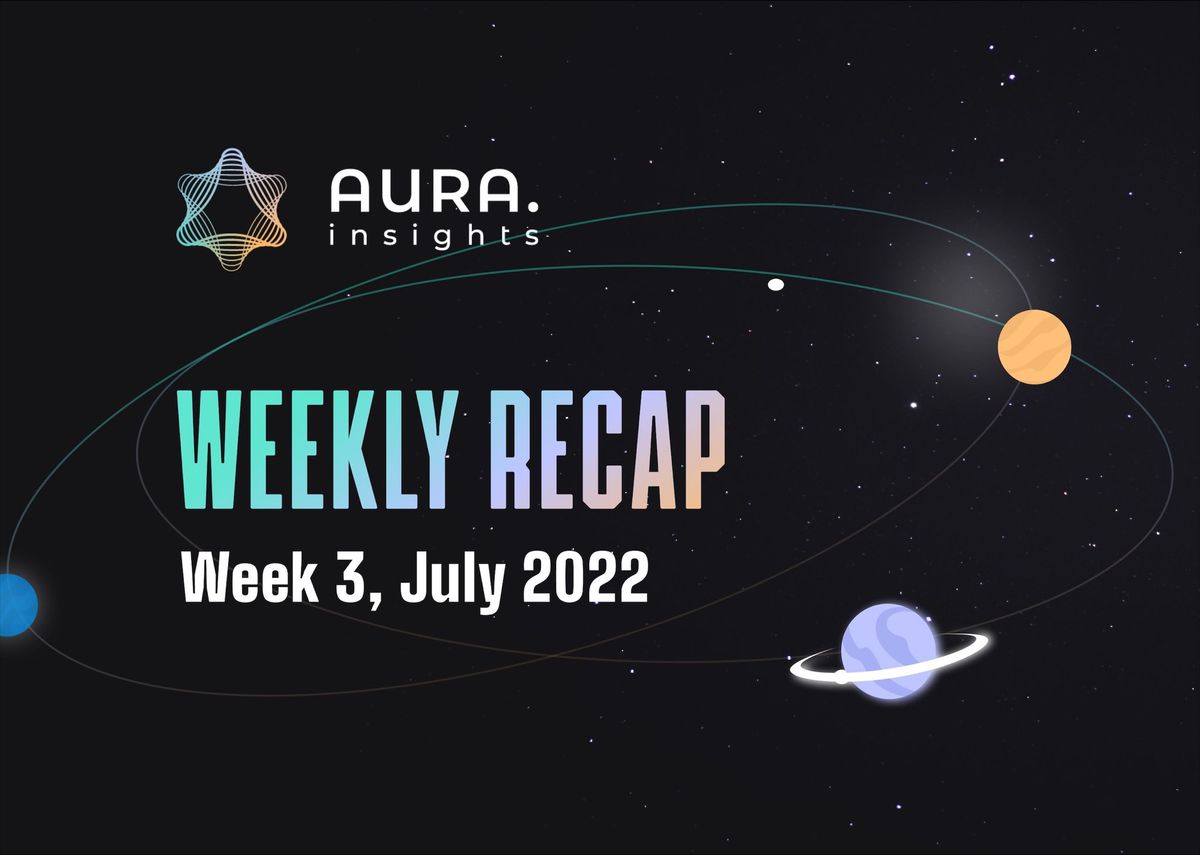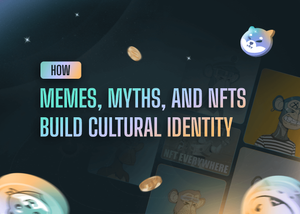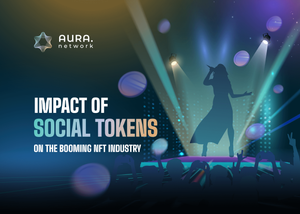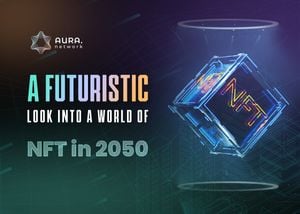The current bear market has seen the NFT industry move from over $15B in January 2022 to less than $5B as of June 2022. While rumors of how hard the bear market would hit continue to spread, the NFT industry remains hot with collection releases and collaborations. Collections such as Doodle partnered with Pharrell Williams to produce a Music NFT and become their Chief Branding Officer. Other collections like Goblin Town continue to engage their community with no road map strategy. Hence investors are looking for opportunities to invest in the thriving industries while industry leaders and builders continue to develop trends that will facilitate adoption and growth. NFTs have grown beyond jpegs; in this piece, we will look at the use cases and exciting NFT trends shaping the future of this multibillion-dollar industry.
Source: BlockCrypto
NFT and Music
NFTs are not just random digital files on the web; they are supported and backed by blockchain technology, giving ownership one at a time. The non fungible token has added a lot to what is happening on the web, and Music is not left out.
The music sector has been gradually changing from the way songs are released to how we listen to them. When songs are released, random people would go to the Internet and search to download or stream them.
Now, streaming platforms would only pay artists according to their terms and conditions. But, NFT has not only given the artists a lucrative income, just as in the case of Bajan rapper Haleek Maul, but it has added to artist-fan intimacy.
Joan Westenberg, a contemporary songwriter, said NFTs open up many ways to connect with their audience on a deeper and more meaningful level. Through NFTs, fans can access special events, ownership rights, a strong community like a DAO, e.t.c.
NFTs and the movie industry
The movie industry has been seeing the NFT influence recently, from crowdfunding to community partnerships and other features yet to be unveiled.
An NFT Tv show that includes Ethereum's co-founder Vitalik Buterin making a voice-over for one of the characters is Stoner Cats, and it is only accessible to StonerCats NFT holders.
The Glue Factory show is another Tv series that has completely changed how the story is written. The show is harnessing the community by making them part of the story writing process through Discord assignment tasks; the writing team then curates the story. So, NFTs have taken movie lovers from being lovers to being part of the movie creation process.
NFT and Games
One of the fastest-growing sectors NFT has tremendously changed is the gaming sector. Axie Infinity, a popular NFT game, reached a $1 billion all-time high last year.
The gaming sector changed when players could start making money from in-game assets; this model is referred to as the play-to-earn model. Using the Axie's game as an example, gamers who want to play either buy or borrow three Axies then get into the adventure mode. Top players have been said to have been making up to $435.
So, gone are the days we only play games for enjoyment or to whirl away time; NFT has given so much more value to the gaming sector.
NFTs in events
NFTs are making the wave everywhere, providing authenticity, and being rare and unique. These qualities have made it a backbone in so many industries, including events. This is not only limited to crypto events or conferences.
In events, NFTs are changing bookings and ticketings. In the digital space, anything can be easily forged and used for false representations. Tickets, cards, and other access event tools can be easily recreated without the owner's consent.
Since one person can only own NFTs at a time, in a conference of 500 participants, each ticket NFT would be unique to each holder, thereby eliminating false recreation and scams. A typical example is the Governor's Ball music festival where Coinbase users were given a one-of-a-kind NFT which also granted to the VIP lounge.
Digital Twin with NFTs
Digital twin is a digital representation of a physical product. Through NFTs, physical products, especially assets, would be stored on the blockchain, making verification more genuine. Why is this needed?
In 2017, the U.S alone was estimated to have lost about $600 billion to counterfeit goods each year. The blockchain technology that powers these NFTs uniquely identifies the asset it represents, just as in the case of Nike's cryptokicks patent. The patent analyzes a blockchain system of cryptographically protected digital assets with a physical product.
NFTs in the health sector
The digital sector easily traps information from its users either deliberately by filling surveys or unknowingly through digital devices. This information is stored on the company's servers, and they are being used without the user's consent. This is a breach NFT is fixing up.
Medical centers are known to use digital equipment for faster operations. The data supplied by all these machines are used to either produce better drugs/tools or supplied and sold to other companies for monetary gain. A popular example is Ovia which was found to sell its user's data to third parties without further notification to the user.
Companies like Aimedis are using NFTs to make this data trackable and monetized by the user. This means every data the user supplies becomes a trackable and tokenized asset.
NFT and social media trends
Social media has also gotten its take from the NFT catch. With the introduction of PFP NFTs, which stands for profile picture NFTs, Twitter has added an extended feature to verify NFTs used as profile pictures.
This is another future-shaping trend as this feature is still limited. Anyone can use any NFT, either original or fake, as a profile picture, but those with Twitter blue ticks, who have their NFTs can easily verify themselves as the owner. Instagram also announced that they would be testing collectibles on their social media platform, thereby making creators and collectors gain access to their works.
NFTs in sports
The sports sector is getting its share of NFTs benefits as NBA Top Shot was able to register 800,000 users and generated $500 million during the test of their beta phase in October 2020.
There are other use cases of NFTs in sports rather than highlights from games played. Fan tokens, fan loyalty and engagement, Decentralized sports governance, e.t.c.NFTs use is growing and growing fast. Developers are cracking knots daily to improve the role NFTs play in each sector. The growth of the Metaverse- the digital universe- continually adds to the growth of NFTs.










